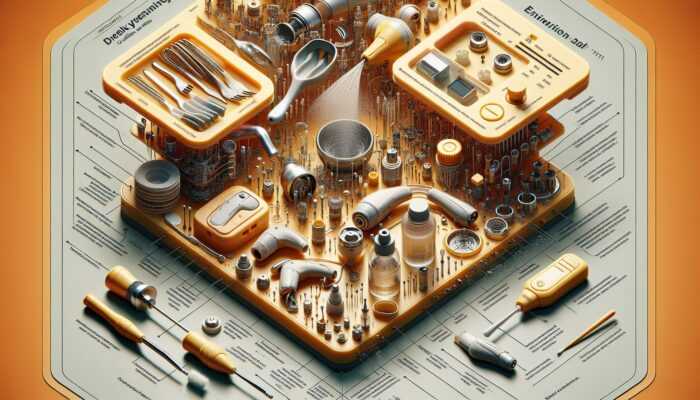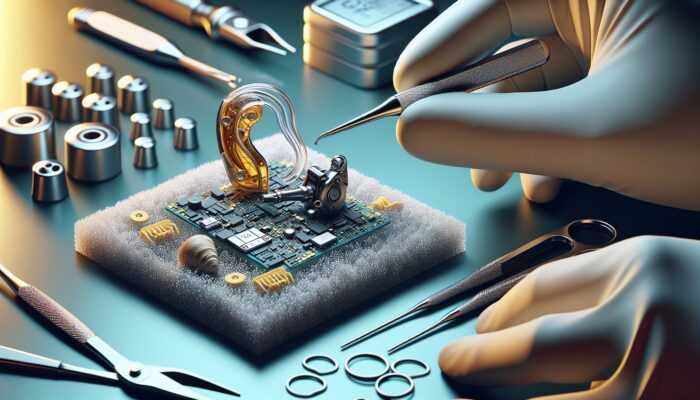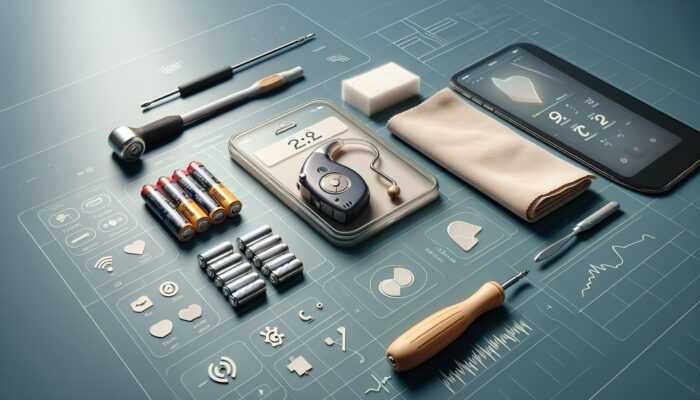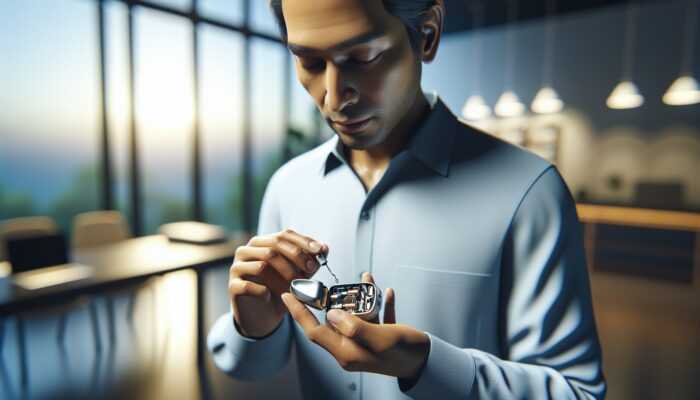Mastering the Complexities of UK Healthcare Regulations for Optimal Billing Software Selection
Selecting the most appropriate software for healthcare billing is a vital undertaking, particularly in the intricate environment shaped by UK healthcare regulations. The National Health Service (NHS) lays down specific guidelines that significantly influence both the functionality and compliance of billing software. By thoroughly familiarising yourself with these regulations, you can not only choose software that meets your needs but also ensure your practice operates efficiently while adhering to compliance standards that safeguard your operations.
Decoding NHS Regulations for Effective Billing Software Choices
A comprehensive understanding of NHS regulations is essential when determining the criteria for selecting healthcare billing software. The NHS functions under rigorous guidelines that govern billing processes, ensuring accuracy and transparency in all financial transactions. Compliance with these regulations is critical for any software intended for deployment in NHS settings, and failing to adhere could have serious repercussions for your organisation.
Central to NHS regulations is the imperative of financial accountability. Software must support effective coding and billing practices, which diminishes the likelihood of errors that could culminate in financial penalties or disputes. For example, the NHS mandates the use of specific coding systems such as ICD-10 for diagnoses, necessitating that the billing software accurately integrates these codes. If your selected software lacks these capabilities, it may severely impede your organisation’s ability to align with NHS financial regulations, putting your practice at risk.
Additionally, the NHS regularly updates its billing protocols and guidelines to mirror evolving healthcare practices. Therefore, selecting software that possesses the flexibility to adjust to these changes is paramount. A software solution that allows for seamless updates and revisions will ensure your practice remains compliant over time, eliminating the need for frequent, disruptive overhauls of your entire system.
Understanding the Importance of the Data Protection Act in Patient Data Management
The Data Protection Act is a cornerstone in the management of patient data within the UK healthcare ecosystem. When assessing software for healthcare billing, it is critical to ensure that it aligns with this act, particularly concerning patient confidentiality and data security. The act enforces strict guidelines on how personal data must be collected, stored, and processed, which directly impacts how billing software should operate.
A fundamental requirement of the Data Protection Act mandates that patients must provide explicit consent for their data to be utilised. Hence, any billing software selected should incorporate secure methods for obtaining and recording this consent, ensuring that patient rights are respected. Furthermore, patient data must be securely stored to prevent unauthorised access, making this a crucial consideration when evaluating potential healthcare billing software solutions.
Moreover, the act stipulates that patients have the right to access their data. Consequently, it is vital to choose a system that allows easy access for patients and healthcare providers alike. Therefore, ensure that any software you consider facilitates this access while remaining compliant with all relevant regulations.
Ensuring CQC Compliance for High-Quality Healthcare Delivery
The Care Quality Commission (CQC) plays a pivotal role in ensuring that healthcare providers in the UK deliver safe, effective, and high-quality care. Compliance with CQC standards is essential for all healthcare practices, extending to the software systems they utilise. When assessing healthcare billing software, understanding how it aligns with CQC standards is crucial for maintaining quality care.
CQC compliance necessitates that healthcare billing software facilitates thorough documentation of patient interactions, billing processes, and financial transactions. Such documentation is not only essential for operational efficiency but also for accountability during inspections or audits conducted by the CQC. Software that features integrated documentation capabilities can simplify this process, ensuring that your practice meets the required standards with ease.
Furthermore, CQC inspections often scrutinise the quality of care provided to patients, which can be directly influenced by the efficiency of billing systems. A software solution that optimises billing processes allows healthcare providers to concentrate more on patient care rather than administrative burdens. Seek software that offers a clear audit trail and robust reporting functionalities, as these features will not only aid in compliance but also elevate the overall quality of care delivered to patients.
Thoroughly Evaluating Software Features for Maximum Efficiency
In your pursuit of the ideal healthcare billing software, a meticulous evaluation of the software’s features is paramount. The capabilities offered by your chosen software directly impact the efficiency of your billing processes, overall patient satisfaction, and compliance with UK regulations that govern healthcare practices.
Integration Capabilities: The Key to Seamless Workflow
One of the foremost features to examine is the integration capabilities of the software. The healthcare landscape in the UK is supported by various systems, including EMIS and TPP, which are prevalent for patient management and electronic health records. Opting for billing software that can seamlessly integrate with these existing systems will facilitate smoother workflows and significantly reduce the frequency of data entry errors, enhancing overall operational efficiency.
The inherent value of integration capabilities lies in their ability to automate the transfer of patient information between systems. This not only conserves time but also ensures that billing information remains accurate and up-to-date. For instance, when a patient is registered in the EMIS system, their data should automatically populate within the billing software, thus minimising the risk of discrepancies that could lead to billing errors.
Moreover, software that integrates effectively with existing platforms can maintain a comprehensive view of patient care and financial management. This interconnectedness enhances operational efficiency, allowing healthcare providers to focus on delivering exceptional care rather than struggling with disjointed systems. In an environment where speed and precision are essential, such integration can significantly improve the patient experience and the efficacy of healthcare delivery as a whole.
Advanced Reporting Functions to Drive Decision Making
Robust reporting functions represent another essential feature to consider when assessing healthcare billing software. UK health authorities necessitate various reports for compliance, financial forecasting, and operational assessments. A software solution that provides advanced reporting capabilities can substantially ease these demands, enhancing decision-making processes within your practice.
Effective reporting capabilities facilitate the rapid generation of essential documents, including financial statements, compliance reports, and performance metrics. These documents can be instrumental in identifying trends, tracking revenue, and ensuring that billing practices align with both NHS and CQC standards, thereby fostering a culture of accountability and transparency.
Furthermore, software that offers customisable reporting options allows healthcare providers to tailor reports to their specific needs and requirements. This flexibility can be particularly beneficial in addressing unique challenges within your practice. For instance, if a particular department is underperforming, targeted reports can highlight areas necessitating attention, enabling prompt intervention and improvement strategies.
Additionally, access to real-time data reporting can aid practices in swiftly adjusting their strategies in response to fluctuating financial performance. The ability to make informed decisions based on accurate, timely data is invaluable in today’s rapidly evolving healthcare environment, making this feature a critical aspect of your software selection process.
User Interface: Enhancing Productivity and User Experience
The user interface (UI) of healthcare billing software should be both intuitive and user-friendly. A well-crafted UI can significantly influence the productivity of healthcare staff who will engage with the software daily. If the software is cumbersome or challenging to navigate, it can lead to errors, frustration, and ultimately compromise patient care and satisfaction.
When evaluating potential software solutions, it is advisable to conduct a trial run or demo to assess the interface. Features such as straightforward navigation, simple data entry processes, and readily accessible help resources can greatly enhance the user experience. Minimising the need for extensive staff training can be achieved when the software is designed with user-friendliness in mind, allowing healthcare professionals to concentrate on their primary duties rather than grappling with complex software systems.
Moreover, a well-designed user interface can accelerate the speed of billing processes. If staff can quickly locate patient records or billing codes, it can result in faster turnaround times and improved cash flow for the practice. Enhancing the user experience should be a top priority, as it is directly correlated with the efficiency of your healthcare operations and the satisfaction of both staff and patients alike.
Prioritising Data Security and Regulatory Compliance
Data security is of paramount concern in the healthcare sector, given the sensitive nature of patient information. When selecting healthcare billing software, it is essential to ensure that it aligns with UK data protection regulations, including GDPR. A robust data security framework is necessary to protect patient data from breaches and unauthorised access, safeguarding both your practice and your patients.
The software should implement advanced security measures, such as encryption, secure user authentication, and regular security audits. Additionally, it is vital to confirm that the vendor has a clear policy regarding data handling, storage, and processing. Look for software that offers comprehensive data protection training for your staff, as human error is often a significant factor in security breaches within healthcare settings.
Compliance with GDPR is obligatory for all software that manages personal patient data. This regulation underscores the importance of obtaining explicit consent from patients prior to their data being utilised. Your chosen software should facilitate this process, allowing for straightforward documentation of consent and patient rights, thus enhancing trust in your practice’s operations.
Finally, ensure that regular updates and security patches are implemented as part of the software’s maintenance to maintain compliance and protect data integrity. Verify that the software vendor has a solid record of promptly addressing security vulnerabilities and implementing necessary updates to safeguard your practice.
Evaluating Vendor Support for Seamless Software Implementation
The level of support provided by your software vendor can significantly influence your experience with healthcare billing software. Evaluating the quality and availability of vendor support is a critical step to ensure you receive the necessary assistance for smooth operational processes.
Importance of UK-Based Customer Service for Efficient Support
Access to UK-based customer service is essential for receiving timely assistance and resolving any issues that may arise with your billing software. Time zone differences can hinder responsive support if the vendor is located abroad. Local customer service offers the advantage of understanding UK-specific regulations and practices, enhancing the quality of support you receive.
When reviewing potential vendors, inquire about their customer support options, including phone, email, and chat support. A provider with a dedicated UK support team can ensure that your queries are addressed swiftly, minimising downtime and disruption in your billing processes, which is critical in a fast-paced healthcare environment.
Additionally, consider the availability of support outside standard business hours. Healthcare professionals often work irregular hours, and having access to support when needed can be a decisive factor in ensuring ongoing operational continuity and addressing any urgent issues that may arise.
A collaborative approach from your vendor can enhance your experience significantly. Seek out providers that foster ongoing relationships rather than one-off transactions, demonstrating their commitment to your long-term success and satisfaction with their software solutions.
Comprehensive Training Programmes for Effective Software Use
Thorough training programmes tailored for UK healthcare professionals can greatly enhance the efficiency with which the software is used. When selecting a vendor, evaluate the training resources they offer, as a well-structured training programme can equip your staff with the necessary skills to navigate the software effectively, thereby reducing the learning curve associated with new systems.
Training should encompass a variety of modalities, including in-person sessions, online courses, and user manuals. This diversity allows staff to select the learning format that best fits their preferences and schedules, thus optimising the training experience. Additionally, ongoing training opportunities are valuable as software updates and new features are introduced over time.
Consider whether the vendor provides customised training resources that align with your specific needs. For example, if your practice has unique workflows or billing procedures, training that addresses these elements can significantly enhance overall software adoption and effectiveness in your operations.
Investing in comprehensive training not only empowers your staff but also improves interactions with patients and financial outcomes for your practice. When staff are confident in utilising the software, they can dedicate more attention to patient care rather than navigating administrative hurdles.
Regular Software Updates for Continued Compliance and Functionality
Verifying that your chosen software receives regular updates is vital for maintaining compliance and functionality within the dynamic landscape of UK healthcare. As healthcare regulations and technology continue to evolve, your software must keep pace with these developments to remain effective and compliant.
Regular updates ensure that the software adheres to the latest NHS guidelines and regulations. This is particularly crucial given the fluid nature of healthcare policies in the UK. A vendor that prioritises software updates demonstrates their commitment to supporting healthcare providers through ongoing compliance and operational efficiency.
Moreover, updates often encompass new features, enhanced security measures, and bug fixes. This continuous improvement not only optimises the overall performance of the software but also ensures that your practice is equipped with the latest tools necessary to enhance efficiency and patient care.
Ask potential vendors about their update schedule and how they communicate these changes to clients. A transparent update process enables your practice to prepare for new features and ensures seamless transitions without disrupting daily operations, thus maintaining a high level of service for your patients.
The Value of On-Site Support for Practical Solutions
On-site support can be an invaluable asset when selecting healthcare billing software. Certain challenges are too complex to resolve over the phone or via email, necessitating the presence of an experienced technician who can address specific issues directly and efficiently.
When evaluating vendors, inquire about their policies regarding on-site support. Providers that offer this option can swiftly resolve issues that may arise during the implementation phase or ongoing use, significantly minimising downtime and frustration for your staff.
Moreover, on-site support can be especially beneficial during the initial implementation phase. Having a representative available to guide staff through the setup and troubleshooting process can lead to quicker integration and smoother workflows, fostering a positive experience with the software from the outset.
Evaluate the vendor’s reputation and history regarding on-site support. Client testimonials or case studies can offer insights into the effectiveness of their support services, aiding you in making an informed decision based on past performance and client satisfaction.
Dedicated Account Management for Tailored Support
A dedicated account manager can play a crucial role in ensuring that your practice receives personalised support and guidance throughout your relationship with the software vendor. When discussing potential software solutions, assess whether the vendor assigns a dedicated account manager to clients in the UK, as this can greatly streamline communication.
This role ensures that any concerns or questions are addressed promptly, as a dedicated account manager becomes familiar with your practice’s specific needs and operational challenges. This familiarity allows for tailored support and recommendations that align with your strategic goals and compliance requirements, fostering a collaborative relationship.
Furthermore, having a single point of contact enhances the understanding of your practice’s unique challenges and workflows. This comprehensive knowledge enables the account manager to provide insights and solutions that are directly relevant, thus improving your overall experience with the software.
Ultimately, a dedicated account manager can transform a transactional vendor relationship into a collaborative partnership, fostering a more productive and supportive environment for your healthcare billing needs.
Cost Considerations in Healthcare Billing Software Selection
When it comes to implementing new healthcare software, comprehending the total cost of ownership is crucial for making informed decisions. Evaluating the financial implications of the software will guide you in selecting a solution that fits within your budget while effectively meeting your practice’s operational needs.
Understanding the Initial Investment for Healthcare Software
Assessing the initial investment required for acquiring and implementing healthcare billing software is the first step in your financial analysis. Initial costs can vary markedly depending on the software’s features, customisation options, and the level of vendor support provided.
When considering the initial investment, factor in not just the cost of the software licence but also related expenses such as installation, training, and data migration. It is vital to obtain a comprehensive breakdown of all associated costs from the vendor, ensuring there are no hidden fees or charges that could arise later, which could inflate your budget unexpectedly.
Additionally, consider the scalability of the software. If your practice anticipates growth, investing in a solution that can expand alongside your operations may prove more cost-effective in the long run. A scalable system can accommodate increased patient volumes, additional billing complexities, and potential changes in regulatory requirements without necessitating a complete overhaul of your software, thereby maximising your investment.
Understanding the initial investment will empower you to make a well-informed decision about whether the software aligns with your financial goals and long-term vision for your practice.
Evaluating Ongoing Expenses for Financial Planning
Beyond the initial investment, ongoing expenses associated with healthcare billing software warrant careful consideration. These costs can include maintenance fees, support subscriptions, and regular updates, all contributing to the software’s total cost of ownership and impacting your budget over time.
Maintenance fees typically cover software updates, technical support, and troubleshooting services. When evaluating vendors, inquire about their maintenance policies and whether these fees are included in the initial purchase price or charged separately, as this can significantly affect your long-term financial planning.
Support subscriptions represent another recurring cost to factor into your financial assessment. While some vendors may offer free support for a limited time, ongoing assistance typically incurs monthly or annual fees. Selecting a vendor with transparent pricing regarding support options will facilitate accurate budgeting and help you avoid unexpected costs in the future.
Regular updates are also critical for ensuring compliance with UK healthcare regulations. Confirm whether update costs are included in your subscription or if they will incur additional charges. Understanding these ongoing expenses will enable you to make informed decisions regarding the long-term financial commitment associated with your chosen software solution and its impact on your practice’s bottom line.
Conducting a Comprehensive ROI Analysis for Financial Justification
Calculating the return on investment (ROI) is a vital component of assessing the long-term financial benefits of healthcare billing software. A positive ROI indicates that the benefits derived from the software outweigh the costs incurred, establishing it as a worthwhile investment for your practice.
To perform an ROI analysis, begin by estimating the potential savings and efficiencies the software can deliver. For instance, if the software streamlines billing processes, reduces errors, or accelerates payment cycles, quantify these improvements into tangible cost savings. Calculate the time saved in billing tasks and how that time can be redirected toward patient care or other productive activities that enhance your practice’s service delivery.
Furthermore, consider the potential revenue enhancements that the software may enable. Improved billing accuracy can lead to fewer claim rejections and faster reimbursements, ultimately increasing your practice’s revenue stream. This financial uplift is crucial for maintaining a sustainable operational model.
Once you have estimated potential savings and revenue increases, compare these figures against the total costs associated with the software, including initial investments and ongoing expenses. This comprehensive analysis will provide a clearer picture of the software’s financial impact on your practice, allowing for well-informed decision-making.
Exploring Tax Implications for Financial Benefits
Understanding the tax implications associated with investing in healthcare billing software in the UK is essential for maximising your financial advantages. The capital investment in software may qualify for tax relief under various schemes, making it a financially astute decision for your practice.
The Annual Investment Allowance (AIA) permits businesses to deduct the full value of qualifying capital investments from their profits before tax. Recent updates to this allowance can significantly reduce your taxable income, facilitating a more manageable cash flow situation for your practice and enhancing financial sustainability.
Additionally, software expenses may be regarded as deductible business expenses, further lowering your overall tax liability. It is advisable to consult with a financial advisor or accountant well-versed in UK tax regulations to understand how these deductions can be optimally leveraged for your practice, ensuring that you gain maximum financial benefit from your software investment.
Investing in healthcare billing software not only streamlines operations but can also offer significant financial advantages in the form of tax relief. Understanding these implications is crucial for making informed financial decisions regarding software investments that will benefit your practice both operationally and financially.
Conducting a Cost-Benefit Analysis to Assess Value
Evaluating the financial advantages and disadvantages of implementing healthcare billing software through a cost-benefit analysis can clarify its overall value. This systematic approach allows you to weigh the potential benefits against the costs to ascertain whether the software aligns with your practice’s operational and financial goals.
Begin by listing all costs associated with the software, including the initial investment, ongoing expenses, and any hidden fees. Next, identify the benefits, such as time savings, increased billing accuracy, enhanced patient satisfaction, and compliance with essential regulations.
Quantifying these benefits can be challenging, yet it is essential for a balanced assessment. For instance, if the software reduces billing errors and accelerates payment cycles, calculate the financial impact of these efficiencies over a defined period to fully appreciate the software’s potential value.
A well-executed cost-benefit analysis will illuminate the overall value of the software, aiding you in determining whether it is a worthy investment for your practice. This process will provide clarity and confidence in your decision-making, enabling you to select software that maximises both operational effectiveness and financial performance in your healthcare delivery.
Upholding Security and Compliance Standards in Healthcare Billing Software
Security and compliance are non-negotiable factors when selecting healthcare billing software. Given the sensitive nature of patient data, robust protective measures and strict adherence to regulatory standards are essential for ensuring safety and instilling confidence among patients regarding their data privacy.
Ensuring GDPR Compliance for Patient Data Protection
GDPR compliance is imperative for any software managing personal data within the UK healthcare sector. The General Data Protection Regulation enforces stringent requirements regarding how personal data is collected, stored, and processed, necessitating that healthcare billing software adheres to these principles to safeguard patient information.
When selecting software, ensure it provides mechanisms for obtaining explicit patient consent for data usage. This feature is critical, as patient data cannot be processed without their informed agreement. Moreover, assess whether the software includes functionalities that allow patients to exercise their rights under GDPR, such as requesting access to their data or demanding its deletion when necessary.
Additionally, verify that the software vendor demonstrates a commitment to data protection through regular audits and compliance checks. A vendor that prioritises adherence to GDPR not only safeguards patient data but also protects your practice from potential penalties associated with non-compliance, thereby enhancing trust in your operations.
Investing in software that ensures GDPR compliance will bolster your practice’s reputation and foster patient trust, which is invaluable in today’s healthcare environment, where data security is of paramount importance.
Implementing Robust Cybersecurity Measures for Data Integrity
Strong cybersecurity measures are essential for protecting patient data within healthcare billing software. As cyber threats have become increasingly sophisticated, healthcare organisations are particularly vulnerable to attacks due to the sensitive nature of the information they manage.
When evaluating potential software solutions, inquire about the specific security features implemented by the vendor. Look for measures such as data encryption, secure user authentication protocols, and regular security audits. These safeguards are crucial for protecting patient information from unauthorised access and data breaches that could compromise your practice.
Moreover, assess whether the software complies with best practices in cybersecurity. This includes features such as intrusion detection systems, regular vulnerability assessments, and ongoing security training for staff. Cybersecurity is not merely about technical solutions; it also necessitates cultivating a culture of security awareness among your team to mitigate risks effectively.
Ensuring that your healthcare billing software employs comprehensive cybersecurity measures will protect your practice from potential data breaches and enhance patient trust in your operations, safeguarding your reputation in the healthcare sector.
Utilising Audit Trails for Compliance and Accountability
A critical feature of healthcare billing software is the provision of detailed audit trails. These trails are essential for maintaining compliance with UK healthcare regulations and ensuring accountability within billing processes, which is paramount in a regulated environment.
Audit trails document every action taken within the software, including data access, modifications made to patient records, and billing transactions. This transparency is invaluable during compliance audits conducted by regulatory bodies such as the CQC, as it helps demonstrate adherence to required standards and protocols.
When assessing software options, confirm that the audit trail feature is comprehensive and user-friendly. A straightforward interface that allows for quick access to audit logs will facilitate routine checks and ensure that your practice remains compliant with regulatory requirements, thereby enhancing operational integrity.
Additionally, consider how the software addresses potential discrepancies or issues identified within the audit trails. A responsive system that enables prompt resolution of concerns will enhance operational efficiency and maintain the integrity of your billing processes, ultimately benefiting your practice and its patients.
Investing in software with robust audit trail capabilities will not only support compliance but also promote accountability and transparency within your practice, fostering trust and reliability in your billing processes.
Leveraging User Feedback and Reviews for Informed Software Choices
Gaining insights from the experiences of other users is invaluable when selecting healthcare billing software. User feedback and reviews can provide essential information regarding the performance, support, and overall satisfaction associated with specific software solutions, guiding your decision-making process.
Gathering Reviews from UK Healthcare Providers for Real-World Insights
Collecting feedback from UK healthcare providers who have previously implemented the software can offer a wealth of practical insights. Reviews can illuminate user experiences, highlighting both the strengths and weaknesses of the software, thereby aiding you in making an informed choice.
When researching reviews, pay attention to comments regarding ease of use, software reliability, and customer support experiences. Providers often share valuable information that can help you identify potential pitfalls or challenges before committing to a particular solution, ultimately saving you time and resources.
Consider seeking reviews from organisations of similar size and scope to your practice. The challenges faced by a small clinic may differ significantly from those encountered by a large hospital. Tailoring your research to your specific circumstances will enhance the relevance of the feedback you gather, ensuring that it aligns with your operational needs.
Engaging in forums or professional groups dedicated to UK healthcare can also provide opportunities to gain insights from peers. These platforms facilitate discussions regarding software experiences, enabling you to make a more informed decision based on shared knowledge and experiences.
Examining Case Studies for Practical Applications of Software
Searching for case studies from UK healthcare facilities can provide concrete examples of how specific billing software performs in real-world applications. Case studies illustrate the practical benefits and challenges associated with the software, offering insights into its effectiveness in various settings, which is crucial for understanding its applicability to your practice.
When evaluating case studies, focus on key metrics such as efficiency improvements, compliance outcomes, and user satisfaction. These quantifiable metrics will assist you in assessing whether the software aligns with your practice’s objectives and operational goals, providing a clearer picture of its potential impact.
Moreover, case studies often highlight the support provided by the vendor during implementation and ongoing use. Understanding the level of assistance offered can be a critical factor in your decision-making process, as effective support plays a significant role in the successful integration of new software into your practice.
By examining real-world applications of healthcare billing software, you can gain a deeper understanding of its potential benefits and limitations within your own practice, enabling you to make a more informed selection.
Valuable Peer Recommendations for Trusted Software Choices
Peer recommendations can serve as an excellent resource when selecting healthcare billing software. Seeking recommendations from other UK healthcare professionals can guide you toward reliable software options that have proven successful in similar practice environments.
Engaging in professional networks, forums, or social media groups allows you to solicit feedback regarding software experiences from colleagues. This direct input can provide insights that may not be found in formal reviews, enabling you to gauge the software’s effectiveness in practical, real-world settings.
Furthermore, consider reaching out to contacts within your network who have recently implemented billing software. Their firsthand experiences can offer invaluable guidance on the selection process, potential challenges encountered, and benefits observed after implementation, enriching your understanding of the software landscape.
Peer recommendations serve as a valuable supplement to formal research, empowering you to make a well-rounded decision based on the shared experiences of others in the UK healthcare sector, thereby enhancing your confidence in your software choice.
Frequently Asked Questions: Key Insights into Healthcare Billing Software
What essential features should I prioritise when selecting healthcare billing software?
Focus on features such as integration capabilities, reporting functions, user interface design, compliance with regulations, and vendor support to ensure the software aligns with your practice’s specific needs and operational objectives.
How critical is GDPR compliance in healthcare billing software?
GDPR compliance is vital as it protects patient data and ensures your practice adheres to legal requirements, thereby avoiding potential penalties and fostering patient trust and confidence in your operations.
What advantages does UK-based customer support provide?
UK-based customer support offers timely assistance, a deep understanding of local regulations, and the ability to quickly address issues, minimising disruptions to your practice’s operations and enhancing overall efficiency.
How can I effectively assess the ROI of healthcare billing software?
Calculate potential savings and revenue increases against the total costs associated with the software, including both initial and ongoing expenses, to determine the overall return on investment and its impact on your practice’s financial health.
What types of training should I expect from a software vendor?
You should anticipate comprehensive training that includes in-person sessions, online courses, and user manuals, all tailored to meet the specific needs of your healthcare staff and facilitate effective software use.
Can I customise reporting functions in healthcare billing software?
Yes, many software solutions offer customisable reporting options, allowing you to tailor reports to meet your practice’s unique needs and requirements, thereby enhancing the relevance and utility of the data generated.
Why are audit trails necessary in healthcare billing software?
Audit trails ensure transparency in billing processes, help maintain compliance with regulatory requirements, and provide accountability for all data access and changes made within the software system.
What ongoing expenses should I consider when selecting software?
Consider maintenance fees, support subscriptions, and regular update costs as part of your ongoing expenses associated with the software, which will impact your budget and financial planning over time.
How does software integration improve billing processes?
Integration allows for seamless data transfer between systems, reducing errors and improving efficiency in billing processes, ultimately enhancing the overall operational effectiveness of your practice.
What steps should I take if I encounter issues with the software?
Contact your vendor’s customer support for assistance, ensuring they provide timely responses and effective solutions to any concerns, thereby minimising disruption to your practice’s operations.
The post Healthcare Billing Software: A Complete Selection Guide appeared first on Healthcare Marketing Service.

















